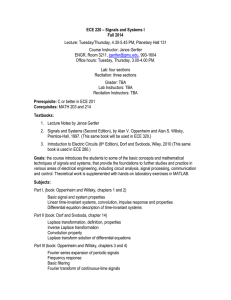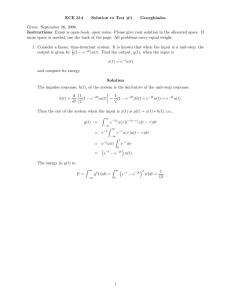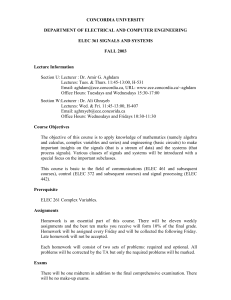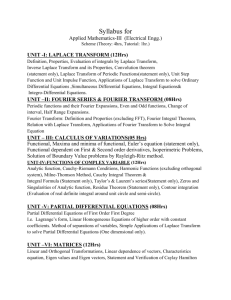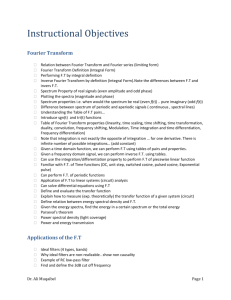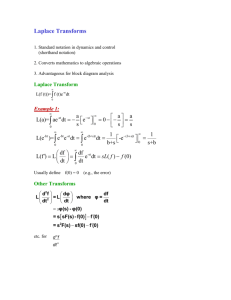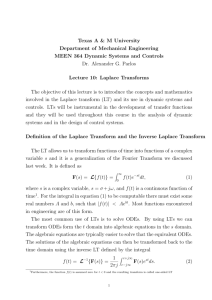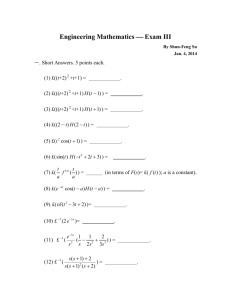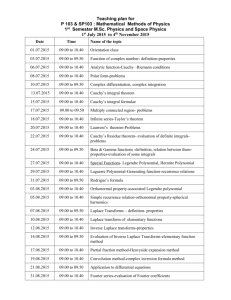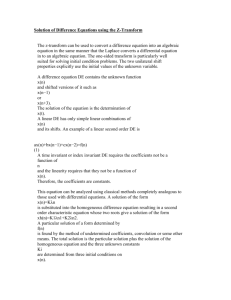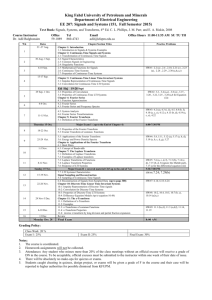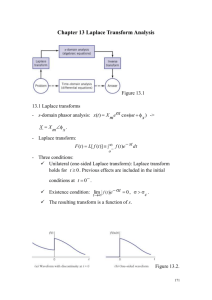ECE 220 – Signals and Systems I
advertisement
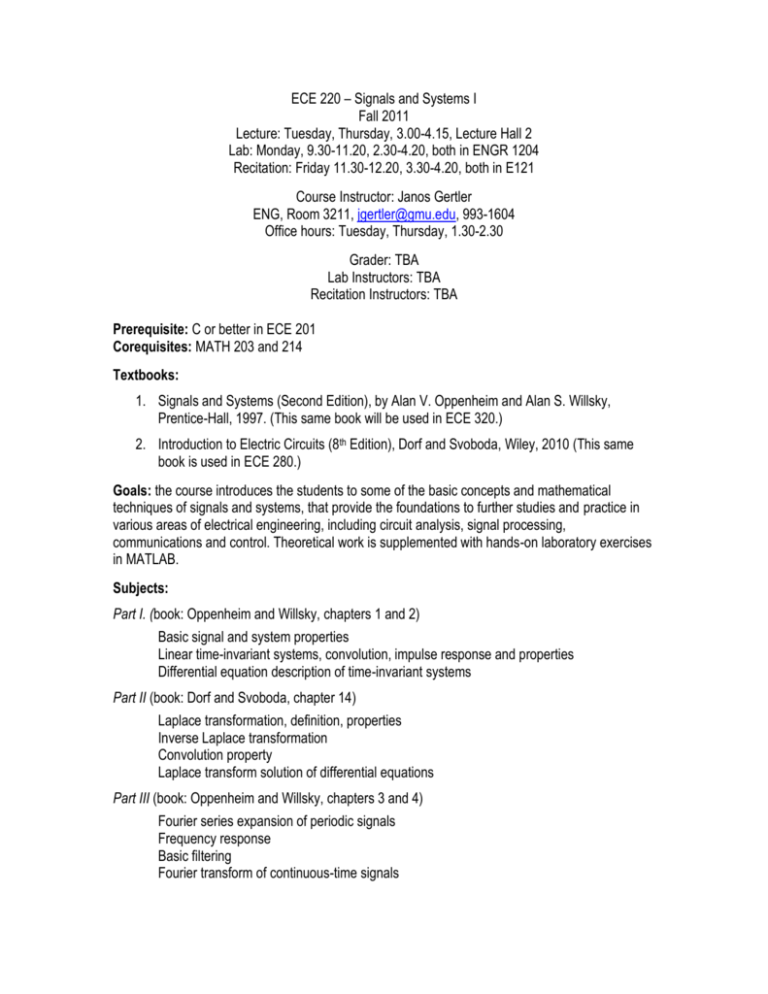
ECE 220 – Signals and Systems I Fall 2011 Lecture: Tuesday, Thursday, 3.00-4.15, Lecture Hall 2 Lab: Monday, 9.30-11.20, 2.30-4.20, both in ENGR 1204 Recitation: Friday 11.30-12.20, 3.30-4.20, both in E121 Course Instructor: Janos Gertler ENG, Room 3211, jgertler@gmu.edu, 993-1604 Office hours: Tuesday, Thursday, 1.30-2.30 Grader: TBA Lab Instructors: TBA Recitation Instructors: TBA Prerequisite: C or better in ECE 201 Corequisites: MATH 203 and 214 Textbooks: 1. Signals and Systems (Second Edition), by Alan V. Oppenheim and Alan S. Willsky, Prentice-Hall, 1997. (This same book will be used in ECE 320.) 2. Introduction to Electric Circuits (8th Edition), Dorf and Svoboda, Wiley, 2010 (This same book is used in ECE 280.) Goals: the course introduces the students to some of the basic concepts and mathematical techniques of signals and systems, that provide the foundations to further studies and practice in various areas of electrical engineering, including circuit analysis, signal processing, communications and control. Theoretical work is supplemented with hands-on laboratory exercises in MATLAB. Subjects: Part I. (book: Oppenheim and Willsky, chapters 1 and 2) Basic signal and system properties Linear time-invariant systems, convolution, impulse response and properties Differential equation description of time-invariant systems Part II (book: Dorf and Svoboda, chapter 14) Laplace transformation, definition, properties Inverse Laplace transformation Convolution property Laplace transform solution of differential equations Part III (book: Oppenheim and Willsky, chapters 3 and 4) Fourier series expansion of periodic signals Frequency response Basic filtering Fourier transform of continuous-time signals Course work: Lecture, two 75 minute sessions per week Recitation, one 50 minute session per week Laboratory, one 110 minute session per week Homework, assigned every week, collected one week later 6 laboratory assignments Two midterm exams and a final, in-class, 75 minutes each, covering Part I, II and III. Exams are closed book/notes. One half sheet of notes (5.5”x8.5”, one sided) may be used for formulas (no worked-out examples), and must be attached to the test. Calculators, in general, are not allowed (exception will be announced). George Mason’s Honor Code is to be observed. Open laptops are not allowed during the lectures. Course grade: Exams 3x20% Lab projects 6x5% Homework 60% 30% (individual work required!) 10% (individual work required!) Lab projects: 1. 2. 3. 4. 5. 6. Basic signals and signal manipulations Convolution Analysis of first-order system Analysis of second-order system Periodic signals, Fourier series Frequency response, filtering Week-by-week lecture schedule (tentative): Aug. Sep. 30 and Sep. 1 6 and 8 13 and 15 20 and 22 27 and 29 Oct. 4 and 6 Oct. 11 and 13 18 and 20 25 and 27 Nov. 1 and 3 8 and 10 15 and 17 22 and 24 29 and Dec. 1 Dec. 6 and 8 Dec. 15, 1.30-4.15 Basic signal properties Basic system properties Impulse response, convolution Convolution, differential equations Differential equation solution. Laplace transform definitions Laplace transform properties. Inverse Laplace transform Columbus day recess (Oct. 11). Midterm I (0ct. 13), Inverse Laplace transform. Convolution property Laplace transform solution of differential equations Periodic signals, Fourier series Frequency response Midterm II (Nov.15), Filtering Fourier transform basics. Thanksgiving recess (Nov. 24) Fourier transform properties. Transform of periodic signals Parseval’s relation, Convolution and multiplication properties Final exam
